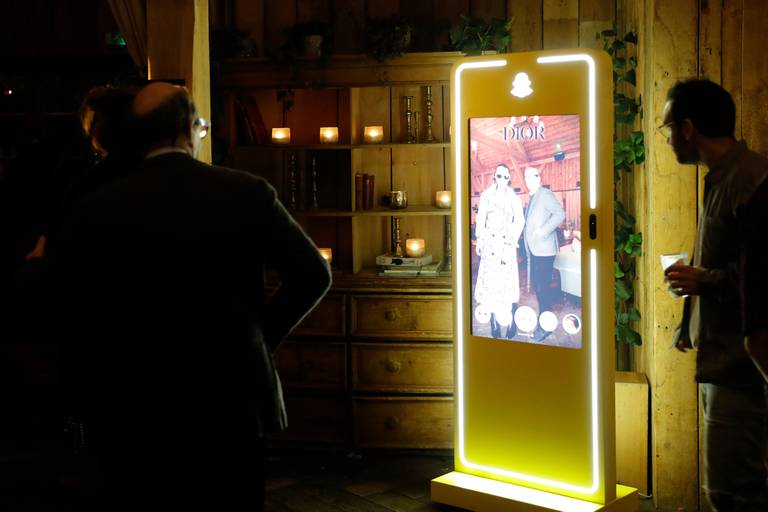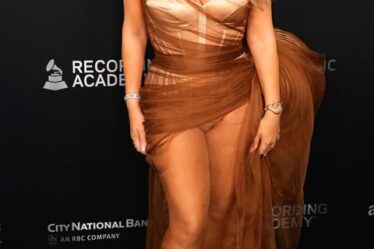
Despite a period of heightened connectivity across a myriad of social channels, consumer experts and analysts have noted a “friendship recession”. In Sapien Labs’ Mental State of The World 2022 report, which surveyed more than 407,000 participants from 64 countries, it is reported that people’s “social self” has declined over the past 12 months, while a report by think tank Onward found 20 percent of 18 to 34-year olds report having one or no close friends.
These figures are perhaps unsurprising with the understanding that many of today’s social platforms continue to prioritise reach and virality over friendship and connection, resulting in a mindset of comparison and need for external validation over real relationships. In turn, there is a knock-on effect on brands and their ability to speak to consumer cohorts who seek authentic connection — further challenged when consumer trust is falling across several key areas, including privacy, safety and ad relevance, according to research from Insider Intelligence.
At VOICES 2023, BoF’s annual event where global thought leaders and experts gather to spark innovation with the future in mind, Snap Inc.’s global head of luxury, Geoffrey Perez, together with BoF’s head of content strategy, Robin Mellery-Pratt and Snap Inc.’s director of creative strategy, EMEA, Valentina Culatti, hosted an intimate salon to discuss the ways in which social media has changed. The conversation centred around how new spaces are building opportunities for close connection with family and friends — creating positive emotional states — and how brands could stand to benefit.
Moderated by BoF’s associate director of content strategy, Alice Gividen, the discussion was held under Chatham House Rule, which precludes the attribution of statements made by specific individuals, allowing attendees to share freely and openly with their peers. Among those attendees were leaders and executives from McKinsey & Co., Amazon, Refy, Boston Consulting Group, J. Crew Group, Marimekko and Dr. Martens.
Now, BoF shares condensed insights from the discussion.
The cultural usage of social media is shifting
Advertising is increasingly losing relevance but gaining more real estate across social channels — something that is having an impact on engagement on different social channels.
Indeed, BoF’s The State of Fashion 2024 consumer survey, produced in partnership with McKinsey & Co., found that 68 percent of respondents were unhappy about the high volume of sponsored content on social media platforms. Meanwhile, influencer marketing — an industry currently worth $21.1 billion, up from $16.4 billion in 2022 — is becoming increasingly complex. However, The State of Fashion 2024 survey also found that 65 percent of respondents were turning less to fashion influencers than a few years ago, as consumer trust begins to wane.
“Social began as a place for one-to-one connection, discussion and engagement. Today, they are deprioritising relationships and connection, and emphasising virality, likes and followers,” said Snap Inc.’s Geoffrey Perez in his opening remarks. “An antidote for social media is required, creating more positive spaces for staying connected online.”
“From a volume perspective, it’s interesting to see what is happening,” said one attendee. “What insulates brands from losing trust entirely is that social media is now an ultra-competitive market. In basic macroeconomics or competition, where there are low barriers-to-entry, it keeps everybody honest. If you are seeing too many sponsored ads in one place, it is very easy to unfollow and then go and follow somebody else.”
“I think the concept of what makes content ‘great’ content has evolved rapidly,” added another guest. “That sense of comfort and trustworthiness is important and hard to achieve across categories. I believe we are seeing a softening in the impact of both luxury and fast fashion, following the highs of 2022.”
“Considering social performance from a category perspective, it is interesting to see skincare and colour cosmetics skyrocket, while categories like travel and experiences are also performing well,” added another guest. “This sits in contrast to the softening of fashion and luxury. Of course, you still have your large-scale success stories, but this overarching trend is definitely taking place.”
As consumer mindsets are evolving, brand strategies should too
As businesses and end-consumers alike grapple with a changing social media landscape, online spaces that foster close connection with loved ones are standing out as platforms to help boost consumer mood.
“Positive emotions are driven by real connections in the digital space, with interactions between close friends and family seeming to be the most impactful,” said Snap Inc.’s Valentina Calutti. “Seventy-six percent of Snapchat users agree the app makes them feel connected with friends and family versus an average of 51 percent across other social apps.”
Indeed, 95 percent of Snapchatters are “happy” when using the app, showing high levels of immersion, said Calutti. “This is a neurological state based on a person’s relative level of attention and emotional connection. When people are highly immersed, they are paying attention, emotionally engaged and committing information to memory.”
For brands, gauging the right time to, and means of, moving into these spaces of personal, close connection is key and often begins with a mindset shift beyond the traditional purchase funnel.
“It’s not really about creating more products for people or consumers. Rather, it’s about leaving it up to customers to be themselves in our branded spaces online,” said one attendee. “Staying true to your principles as a company — staying true to your consumer — is key. We want to use our socials to be a source of expression and empowerment for our community.”
Brand entertainment value is key to success on social media over the medium term
Today, how individuals spend time and attention is evolving rapidly. Activate Consulting refers to a consumer group of “Super Users” — approximately 20 percent of the US population — whose multitasking across technology platforms leads to a nearly 32-hour-long day for the average American, with over 13 hours spent using technology and media, such as film, TV, reality TV and related media, gaming and social.
For brands, content that educates, entertains and has an immersive element for the consumer will help them to stand out across a myriad of channels and distractions.
These new technologies allow consumers to step fully into brand spaces in a very democratic way.
“When it comes to events like the Cannes Film Festival, for instance, the impact of collaborating or activating in that cultural setting carries much more weight than at the traditional fashion weeks,” said one guest.
“Fashion needs the weight of both celebrity and cultural change-makers and taste-makers. Cross-cultural collaboration and content is more important than ever if you want to stand out and truly engage your audience,” they added.
Technological tools are creating immersive environments to engage audiences in new ways
Today, the adage that gaming is a social network stands increasingly true. There are now 3.2 billion gamers worldwide and the category is set to lead growth in consumers’ daily time spent with technology and media over the next four years. Importantly, while playing, gamers are highly engaged, hyper focused and, as a result, hardly ever multi-tasking — presenting a rich opportunity for advertisers.
Extended reality (XR), encompassing augmented reality (AR), virtual reality (VR) and the wearables that will further their advancement, continue to embed themselves into the mainstream and bring gamified moments to social, fostering more immersive environments.
“Snapchat has always had a strong foothold in the AR space, augmenting the human experience by adding a digital layer on top of the world around us,” said Snap Inc.’s Perez. “We believe the next wave of computing will be richer and more immersive. Each day, 250 million people engage with augmented reality on Snapchat. This is not an add-on to our business — it is core to the user experience on the app.”
“I believe that consumers deserve to have access to all of the creative elements of fashion — the aspects that, often, fashion professionals enjoy,” said a salon guest. “These new technologies allow consumers to step fully into brand spaces in a very democratic way.”
“I’m excited by the immersive participatory nature of gaming — and technology that allows for the gamification of social spaces,” added another guest. “It has the potential to carry the content experience beyond just being something that consumers react or respond to and into something that everyone can play with. This feels like a journey where the individual can really be at the heart of the experience.”
This is a sponsored feature paid for by Snapchat as part of a BoF partnership.



